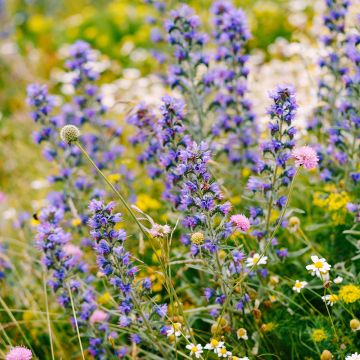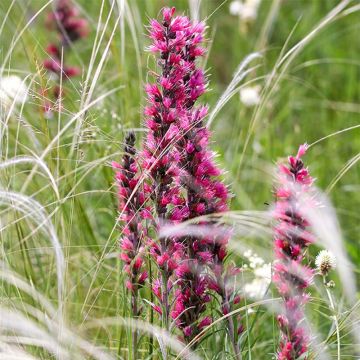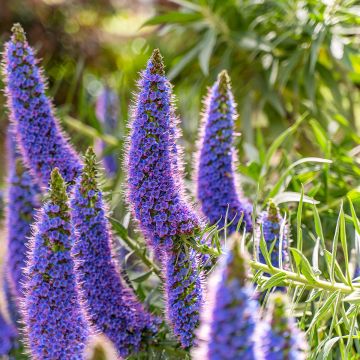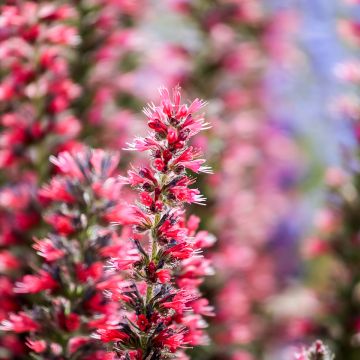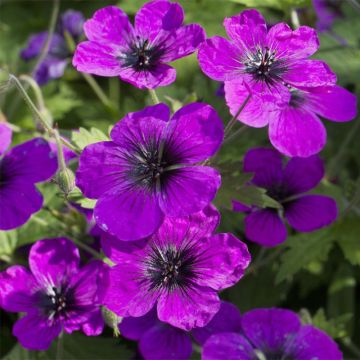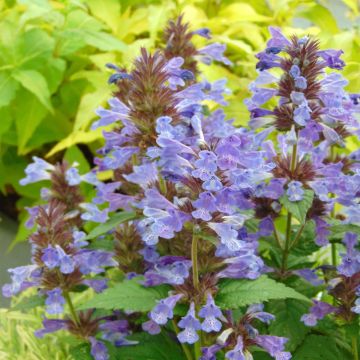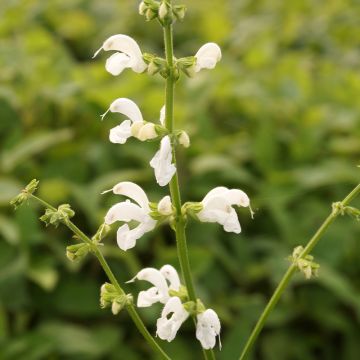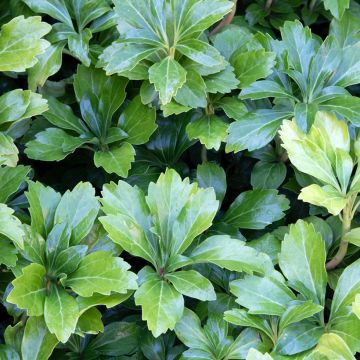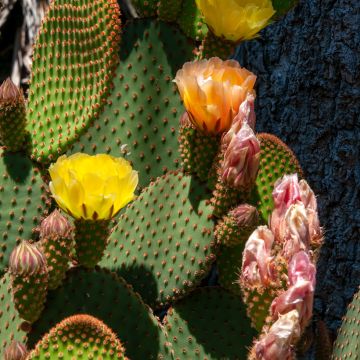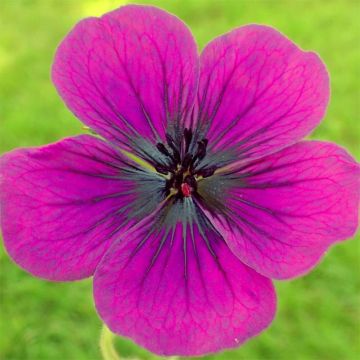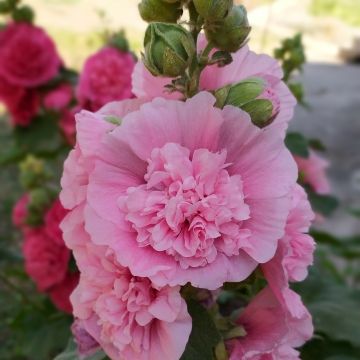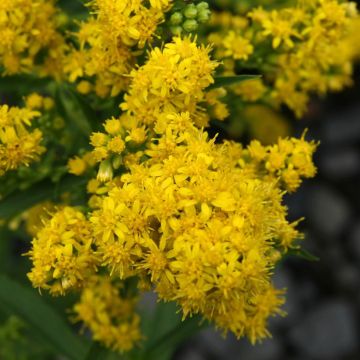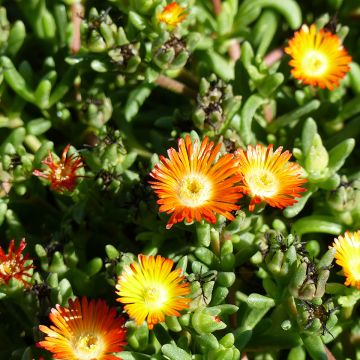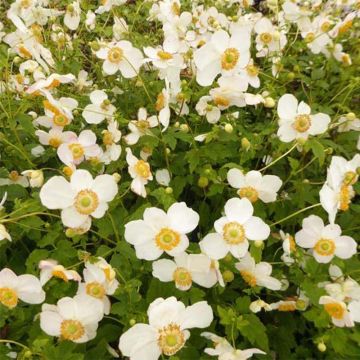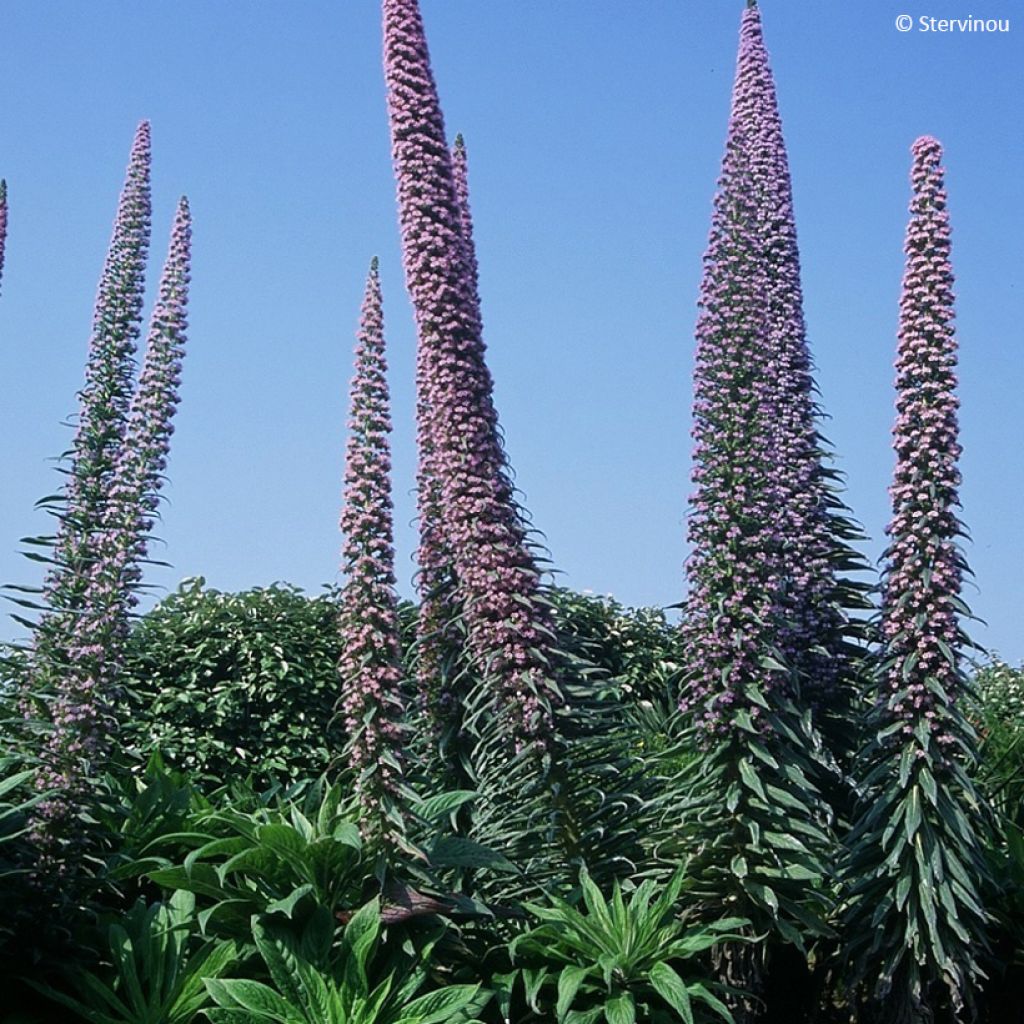

Echium pininana - Tree echium
Echium pininana - Tree echium
Echium pininana
Tree echium, pine echium, giant viper's-bugloss, or tower of jewels
Why not try an alternative variety in stock?
View all →This plant carries a 12 months recovery warranty
More information
We guarantee the quality of our plants for a full growing cycle, and will replace at our expense any plant that fails to recover under normal climatic and planting conditions.
From €5.90 for pickup delivery and €6.90 for home delivery
Express home delivery from €8.90.
Delivery to Corse prohibited: UE law prohibits the import of this plant from mainland France to Corse as part of the fight against Xylella fastidiosa. Please accept our sincere apologies.
More information
Does this plant fit my garden?
Set up your Plantfit profile →
Description
This Canary Island viper's bugloss, named Echium pininana, is a tall exotic biennial plant, native to the Canary Islands. When it reaches two or three years old, it develops a spectacular inflorescence at the centre of a large rosette of narrow silver-green leaves. This immense conical column is covered with small blue and pink flowers. After flowering, the plant dies, but it easily self-seeds in light soil. Not very hardy, it appreciates warmth, well-drained to dry soils, sheltered locations, in full sun. Perfect for adding a touch of originality in coastal gardens.
The Echium pininana belongs to the Boraginaceae family and comes from the Canary Islands, notably Las Palmas. It is a biennial species (sometimes triennial), meaning it only flowers once, then dies after producing seeds. During its first year, it develops a rosette of lanceolate leaves, covered with slightly irritating silver hairs. In the second year, in spring, an impressive inflorescence emerges, reaching up to 3 to 4 m in height. In summer, this giant spike is made up of a multitude of small pink or purplish-blue flowers, interspersed with small silver linear leaves. This flowering, highly appreciated by bees and other pollinators, is followed by the formation of brown fruits containing numerous seeds, which easily germinate in light soil. This allows the plant to quickly colonise a favourable area.
A spectacular plant, the Canary Island viper's bugloss does not go unnoticed. It is ideal for sheltered coastal gardens, where it is protected from heavy frosts, as well as from wind that could break its immense inflorescences. It adapts well to Mediterranean climates and thrives in dry to arid soils in summer. It is planted as a single specimen on large slopes, in the background of dry and sunny borders, where it can grow upright. In an exotic-inspired garden, it can be combined with plants like Euphorbia characias, Euphorbia mellifera, the giant fennel (Ferula communis), Melianthus major or agaves.
Report an error about the product description
Flowering
Foliage
Plant habit
Botanical data
Echium
pininana
Boraginaceae
Tree echium, pine echium, giant viper's-bugloss, or tower of jewels
Mediterranean
Other Echium - Viper's-buglosses
Planting and care
Viper's buglosses thrive in warm and sunny locations, in rather dry, poor, sandy, rocky, even limestone soil, very well-drained where they live longer than in fresh and rich soil. However, they are more majestic in the latter case. Under no circumstances do they tolerate more than one season in heavy, compact, and wet soil. These plants self-seed spontaneously in gravel-covered soils.
Echium pininana does not withstand temperatures below -4°C, its cultivation in open ground is reserved for our mildest coastal areas.
Cultivation in pots is possible but not very practical:
Use a large pot of at least 50 to 60 litres to allow for good root development. The plant needs sufficient space to root well, especially during its second year of growth. Prioritise a well-drained substrate, by mixing universal potting soil with sand or gravel to avoid stagnant moisture, as Echium is very sensitive to excess water. Place the pot in a sunny spot, as the plant requires intense light to grow and flower properly. Water regularly, especially in summer, but let the soil dry between waterings. In winter, reduce watering to prevent root rot. In cold regions, the pot allows you to move the Echium indoors to protect it from frost, such as in a cold greenhouse or a conservatory. The plant is not very hardy and does not tolerate temperatures below -4°C.
Planting period
Intended location
Care
This item has not been reviewed yet - be the first to leave a review about it.
Summer flowering perennials
Haven't found what you were looking for?
Hardiness is the lowest winter temperature a plant can endure without suffering serious damage or even dying. However, hardiness is affected by location (a sheltered area, such as a patio), protection (winter cover) and soil type (hardiness is improved by well-drained soil).

Photo Sharing Terms & Conditions
In order to encourage gardeners to interact and share their experiences, Promesse de fleurs offers various media enabling content to be uploaded onto its Site - in particular via the ‘Photo sharing’ module.
The User agrees to refrain from:
- Posting any content that is illegal, prejudicial, insulting, racist, inciteful to hatred, revisionist, contrary to public decency, that infringes on privacy or on the privacy rights of third parties, in particular the publicity rights of persons and goods, intellectual property rights, or the right to privacy.
- Submitting content on behalf of a third party;
- Impersonate the identity of a third party and/or publish any personal information about a third party;
In general, the User undertakes to refrain from any unethical behaviour.
All Content (in particular text, comments, files, images, photos, videos, creative works, etc.), which may be subject to property or intellectual property rights, image or other private rights, shall remain the property of the User, subject to the limited rights granted by the terms of the licence granted by Promesse de fleurs as stated below. Users are at liberty to publish or not to publish such Content on the Site, notably via the ‘Photo Sharing’ facility, and accept that this Content shall be made public and freely accessible, notably on the Internet.
Users further acknowledge, undertake to have ,and guarantee that they hold all necessary rights and permissions to publish such material on the Site, in particular with regard to the legislation in force pertaining to any privacy, property, intellectual property, image, or contractual rights, or rights of any other nature. By publishing such Content on the Site, Users acknowledge accepting full liability as publishers of the Content within the meaning of the law, and grant Promesse de fleurs, free of charge, an inclusive, worldwide licence for the said Content for the entire duration of its publication, including all reproduction, representation, up/downloading, displaying, performing, transmission, and storage rights.
Users also grant permission for their name to be linked to the Content and accept that this link may not always be made available.
By engaging in posting material, Users consent to their Content becoming automatically accessible on the Internet, in particular on other sites and/or blogs and/or web pages of the Promesse de fleurs site, including in particular social pages and the Promesse de fleurs catalogue.
Users may secure the removal of entrusted content free of charge by issuing a simple request via our contact form.
The flowering period indicated on our website applies to countries and regions located in USDA zone 8 (France, the United Kingdom, Ireland, the Netherlands, etc.)
It will vary according to where you live:
- In zones 9 to 10 (Italy, Spain, Greece, etc.), flowering will occur about 2 to 4 weeks earlier.
- In zones 6 to 7 (Germany, Poland, Slovenia, and lower mountainous regions), flowering will be delayed by 2 to 3 weeks.
- In zone 5 (Central Europe, Scandinavia), blooming will be delayed by 3 to 5 weeks.
In temperate climates, pruning of spring-flowering shrubs (forsythia, spireas, etc.) should be done just after flowering.
Pruning of summer-flowering shrubs (Indian Lilac, Perovskia, etc.) can be done in winter or spring.
In cold regions as well as with frost-sensitive plants, avoid pruning too early when severe frosts may still occur.
The planting period indicated on our website applies to countries and regions located in USDA zone 8 (France, United Kingdom, Ireland, Netherlands).
It will vary according to where you live:
- In Mediterranean zones (Marseille, Madrid, Milan, etc.), autumn and winter are the best planting periods.
- In continental zones (Strasbourg, Munich, Vienna, etc.), delay planting by 2 to 3 weeks in spring and bring it forward by 2 to 4 weeks in autumn.
- In mountainous regions (the Alps, Pyrenees, Carpathians, etc.), it is best to plant in late spring (May-June) or late summer (August-September).
The harvesting period indicated on our website applies to countries and regions in USDA zone 8 (France, England, Ireland, the Netherlands).
In colder areas (Scandinavia, Poland, Austria...) fruit and vegetable harvests are likely to be delayed by 3-4 weeks.
In warmer areas (Italy, Spain, Greece, etc.), harvesting will probably take place earlier, depending on weather conditions.
The sowing periods indicated on our website apply to countries and regions within USDA Zone 8 (France, UK, Ireland, Netherlands).
In colder areas (Scandinavia, Poland, Austria...), delay any outdoor sowing by 3-4 weeks, or sow under glass.
In warmer climes (Italy, Spain, Greece, etc.), bring outdoor sowing forward by a few weeks.

































